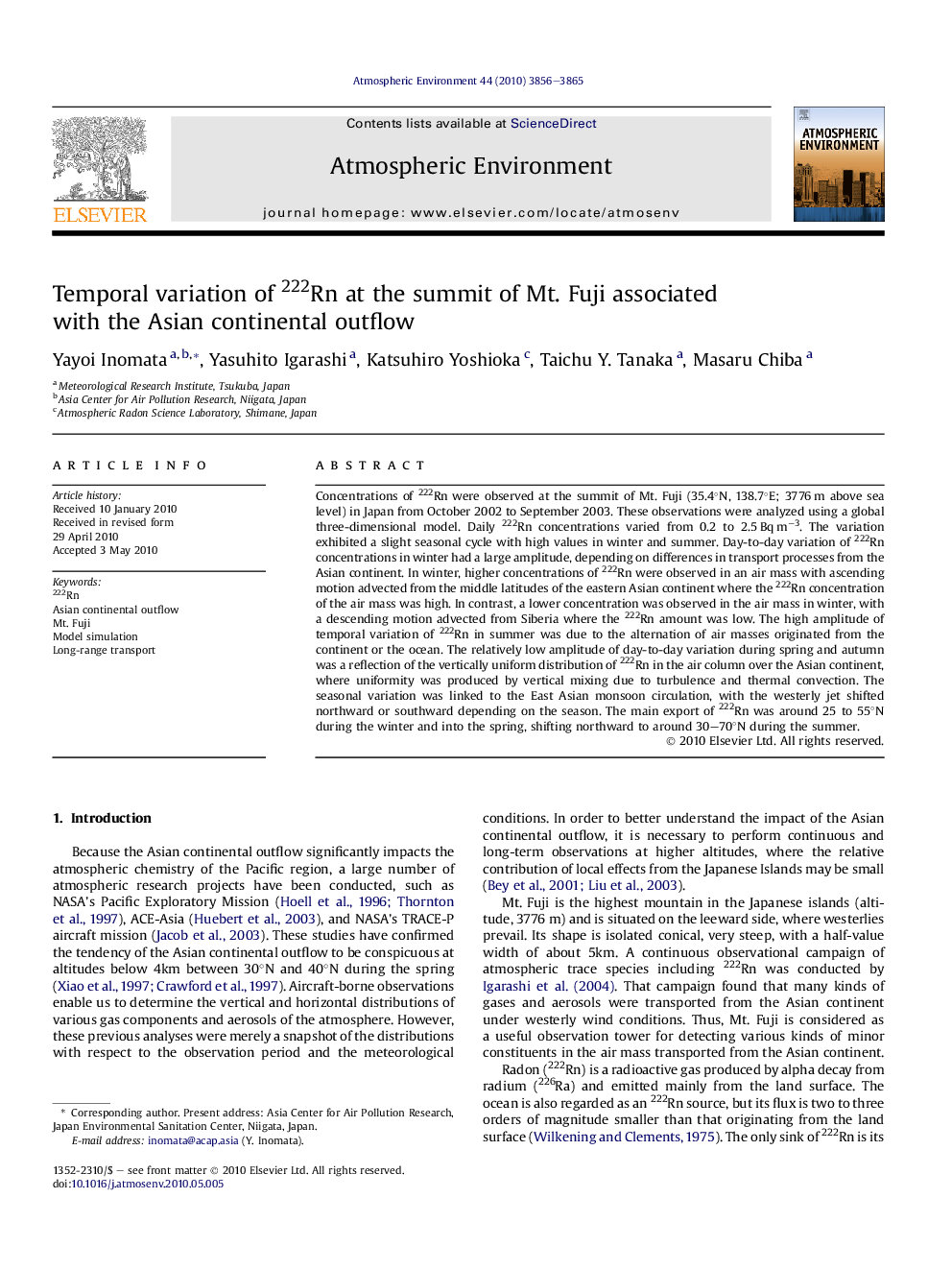| Article ID | Journal | Published Year | Pages | File Type |
|---|---|---|---|---|
| 4440539 | Atmospheric Environment | 2010 | 10 Pages |
Concentrations of 222Rn were observed at the summit of Mt. Fuji (35.4°N, 138.7°E; 3776 m above sea level) in Japan from October 2002 to September 2003. These observations were analyzed using a global three-dimensional model. Daily 222Rn concentrations varied from 0.2 to 2.5 Bq m−3. The variation exhibited a slight seasonal cycle with high values in winter and summer. Day-to-day variation of 222Rn concentrations in winter had a large amplitude, depending on differences in transport processes from the Asian continent. In winter, higher concentrations of 222Rn were observed in an air mass with ascending motion advected from the middle latitudes of the eastern Asian continent where the 222Rn concentration of the air mass was high. In contrast, a lower concentration was observed in the air mass in winter, with a descending motion advected from Siberia where the 222Rn amount was low. The high amplitude of temporal variation of 222Rn in summer was due to the alternation of air masses originated from the continent or the ocean. The relatively low amplitude of day-to-day variation during spring and autumn was a reflection of the vertically uniform distribution of 222Rn in the air column over the Asian continent, where uniformity was produced by vertical mixing due to turbulence and thermal convection. The seasonal variation was linked to the East Asian monsoon circulation, with the westerly jet shifted northward or southward depending on the season. The main export of 222Rn was around 25 to 55°N during the winter and into the spring, shifting northward to around 30–70°N during the summer.
